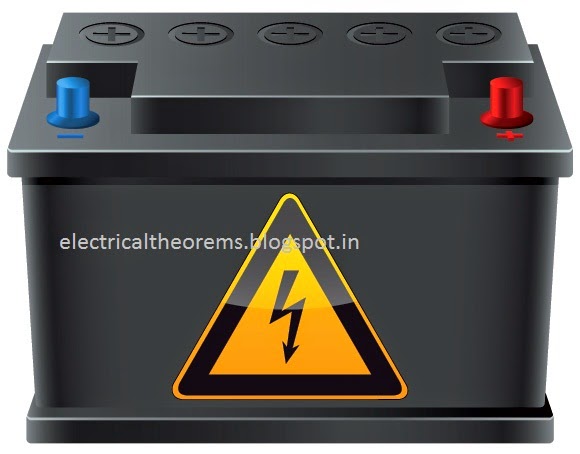electrical theory and electrical fundementals for all electrical related people . students , engineers, electrician #electricaltheorems,electrical,
electrical theory and electrical fundementals for all electrical related people . students , engineers, electrician #electricaltheorems,electrical,
Monday, 22 December 2014
Sunday, 21 December 2014
PIC MICRO CONTROLLERS
electrical theory and electrical fundementals for all electrical related people . students , engineers, electrician #electricaltheorems,electrical,
Low - end PIC Architectures
16C5X
16C505
Mid range PIC Architectures
16C7X
16F87X
C = EPROM
F = Flash
RC = Mask ROM
- Speed:
Harvard Architecture, RISC architecture, 1 instruction cycle = 4 clock
cycles.
- Instruction set simplicity: The instruction set consists of just 35 instructions (as opposed to 111 instructions for 8051).
- Power-on-reset and brown-out reset. Brown-out-reset
means when the power supply goes below a specified voltage (say 4V), it
causes PIC to reset; hence malfunction is avoided.
A watch dog timer (user programmable) resets the processor if the software/program ever malfunctions and deviates from its normal operation. - PIC microcontroller has four optional clock sources.
- Low power crystal
- Mid range crystal
- High range crystal
- RC oscillator (low cost).
- Programmable timers and on-chip ADC.
- Up to 12 independent interrupt sources.
- Powerful output pin control (25 mA (max.) current
sourcing capability per pin.)
- EPROM/OTP/ROM/Flash memory option.
- I/O port expansion capability.
CPU Architecture
 |
| Fig 1 |
PIC Memory Organisation
 |
| Fig 2 |
On reset, the program counter is cleared and the program starts at 00H. Here a 'goto' instruction is required that takes the processor to the mainline program.
Data memory (Register Files)
- General purpose register file (same as RAM).
 |
| Fig 3 |
Saturday, 20 December 2014
SLIP RING
electrical theory and electrical fundementals for all electrical related people . students , engineers, electrician #electricaltheorems,electrical,

Thursday, 18 December 2014
SWITCH MODE POWER SUPPLY (SMPS)
electrical theory and electrical fundementals for all electrical related people . students , engineers, electrician #electricaltheorems,electrical,
SMPS versus linear power supply
Thursday, 11 December 2014
DIODE
electrical theory and electrical fundementals for all electrical related people . students , engineers, electrician #electricaltheorems,electrical,
 |
| Fig 2 |
Saturday, 6 December 2014
SPEED CONTROL OF INDUCTION MACHINE
electrical theory and electrical fundementals for all electrical related people . students , engineers, electrician #electricaltheorems,electrical,
Speed control by changing applied voltage
Rotor resistance control
Stator frequency control
Tuesday, 2 December 2014
BATTERY
electrical theory and electrical fundementals for all electrical related people . students , engineers, electrician #electricaltheorems,electrical,
Batteries
Lead-Acid Batteries
Theory of Operation
Nickel-Cadmium Batteries
Theory of Operation
Tuesday, 25 November 2014
ELECTRIC CURRENT
electrical theory and electrical fundementals for all electrical related people . students , engineers, electrician #electricaltheorems,electrical,
An electric current can be broadly defined as charged particles in motion - a flow of charge. The most obvious effect of a current would seem to be the transfer of charge from one place to another. So it is, when a charged body is discharged by touching it with an earthed wire, or when lightning strikes a tree. However, it is important to realise that most currents flow in closed loops or circuits with no net transfer of charge. When there is a steady current the distribution of charge around a circuit remains constant and every part of the circuit remains substantially neutral.
The effects of electric current
The measurement of electric current
Movement of charge
Definition and unit of current
Current
|
When
there is an electric current in a circuit, energy is generally being
transferred from a source to a load: energy is transferred from a battery to
a lamp or from a nerve cell to measuring electrodes. In such circuits, the
current is associated with the energy transfer.
|
Monday, 24 November 2014
SPEED CONTROL OF DC SERIES MOTOR
electrical theory and electrical fundementals for all electrical related people . students , engineers, electrician #electricaltheorems,electrical,
Speed Control of Series Motors
1. Flux Control Method:
(a) Field Diverters:
(b) Armature Diverter:
A diverter across the armature can be used for giving speeds lower than the normal speed. For a given constant load torque, if Ia is reduced due to armature diverter, the must increase (∵TaIa ) This results in an increase in current taken from the supply(which increases the flux and a fall in speed (N I/ )). The variation in speed can be controlled by varying the diverter resistance.
Variable Resistance in Series with Motor
Sunday, 23 November 2014
LIGHT EMITTING DIODE (LED)
electrical theory and electrical fundementals for all electrical related people . students , engineers, electrician #electricaltheorems,electrical,
























